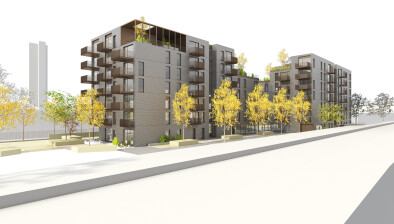Savills reveals positive start to year for Scotland’s prime residential market

Faisal Choudhry
Savills’ latest analysis of Scotland’s prime residential market has highlighted strong demand during the first three months of the year with 52% more buyers registering to buy so far this year compared to the same period in 2019 before the pandemic.
This market represents the most aspirational and desirable properties and typically accounts for the top 5% of the market in terms of sales.
Faisal Choudhry, director of prime residential research at Savills, said the research also shows more choice for buyers as stock levels increase and properties spend more time on the market.
He said: “Demand for prime properties in Scotland is being reflected in the number of sales above £500,000 across the board, which was 5% higher during the first three months of 2023 compared to the same period in 2022 and 13% higher than 2021.”
“With demand and supply finely balanced, prime Scottish house prices remained largely flat during the first three months of 2023. This leaves them just 1.0% higher than a year ago and 16.1% higher since the beginning of the pandemic three years ago,” according to Cameron Ewer, head of Savills Scotland Residential Sales.
A closer look at property locations shows that country properties with acreage remain popular, with a greater focus on commutable addresses with good local schools. Consequently, prime prices for properties in Scotland’s village areas saw a slight quarterly uplift of 0.2% in prices.
Country living may have become more fashionable in recent times, but the popularity of prime urban locations remains unrivalled. Prime prices in Scotland’s towns and cities are currently 13.0% above the 2007/08 peak whereas prices in the areas that surround them are 13.2% below that high-water mark.
Whilst the market for flats remains challenging, the need for family homes with space near good schools continues to drive value growth in the city areas of Edinburgh and Glasgow. However, there is increased caution among buyers.
“Buyers in Edinburgh and Glasgow have become less compromising in their offers, with the cost of borrowing evident in the level of premiums being achieved over Home Report values. Buyers are protecting cash reserves to carry out renovations at a time when the cost of modernising a home is high,” continued Cameron Ewer.
Outside Edinburgh and Glasgow, an imbalance between supply and demand has underpinned values, however future pricing is likely to come under pressure as more stock is expected to launch later this year.
According to Faisal Choudhry: “Prime Scottish prices are likely to come under pressure due to more stock coming on to the market amid wider economic uncertainty. That means sellers will undoubtedly need to be pragmatic on pricing. Accurate pricing from the outset will be important to secure a sale.”
The report highlights that demand for best-in-class and energy efficient homes is outweighing supply as buyers increasingly look towards oven-ready properties given the high cost of refurbishing.
As Cameron Ewer points out: “Well-presented and realistically-priced properties in sought-after addresses are still commanding competition and in some cases buyers are prepared to pay more for the right home. The chronic undersupply of these properties continues to apply upward pressure on prices.”
According to Savills, the prime Scotland market will be less affected by the economic pressures that will drive the wider mainstream housing markets this year. But it will not be immune to these pressures, particularly given the change in buyer sentiment.















